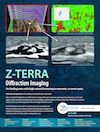Diffraction Imaging
Diffraction Imaging (DI) is a novel seismic imaging technique for focusing diffractions in order to produce super-resolution images of diffractors unattainable by conventional means. Seismic diffractors are small scale scattering subsurface elements such as small faults, fault edges, pinch-outs, salt flanks, reef or channel edges, fractures, fluid fronts, caves, karsts, subtle stratigraphic variations and discontinuities, or in general any reflector unconformities whose spatial extent is less than the seismic wavelength. Recall that the Rayleigh criterion characterizes the resolution limit for a diffraction-limited imaging process as being on the order of the wavelength used in that process. In order to achieve a fundamental advance in the high resolution 3-D prestack imaging of complex geological structures, Diffraction Imaging sidesteps this fundamental physical limit by conceptually upending the methodology of conventional depth imaging: whereas conventional depth imaging seeks to enhance specular reflections, Diffraction Imaging seeks to attenuate them. That is, rather than allow resolution to remain constrained by a diffraction-limited specular imaging process, this paradigm shift in methodology attempts to eliminate the contribution from specular reflectors entirely and instead enhances and focuses deviations from an ideal specular image caused by abberations in specular reflectors in order to image the small structural elements responsible for those deviations.
Listing Details
Visits
1,375
Redirects
269
Don't Miss Out! Get the Best Deal on this Software - Email Us Now!
Map
© OpenStreetMap contributors














